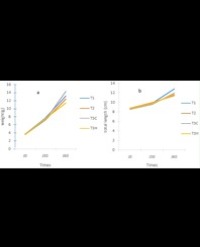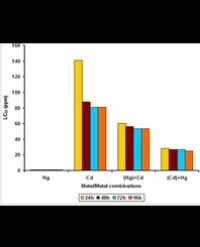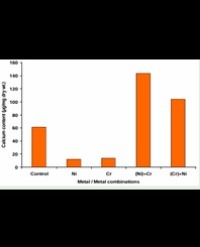
Comparative Effect of Monoculture and Polyculture in Two Species of Clariidae: Heterobranchus longifilis and Clarias gariepinus in Post Fingerlings Growth
In order to improve the production of Clariidae, a study on the type of cultivation of Heterobranchus longifilis and Clarias gariepinus in post fingerlings growth phase was carried out in tanks. It took place from March to May 2018 at the IRAD fish station in Koupa-Matapi (LN: 5º 21 ‘to 5º 58’ and LE: 10º 17 ‘to 11º 02’) west region Cameroon. For this fact 180 fry therefore 90 Heterobranchus longifilis and 90 Clarias gariepinus with an average weight 3.55 ± 0.68 g; 8.46 ± 0.41cm of total length and 7.37 ± 0.30 cm of standard length were used. The 180 fry were divided into three treatments of 60 individuals (T1 treatment: Clarias gariepinus, T2 treatment Heterobranchus longifilis and T3 treatment: Clarias gariepinus + Heterobranchus longifilis). Each treatment was repeated twice. The fish were fed twice per day at a rate of 10% of the ichthyobiomass readjusted each month after control fishing with a feed at 42% crude protein. From the results of this trial, it appears that unlike the higher mortality rates (11.66 ± 2.36%) recorded in monoculture Clarias gariepinus, the highest cannibalism rates were obtained in monoculture of Heterobranchus longifilis (13.33 ± 4.71%). The survival rate was not influenced by the type of culture. Nevertheless, the highest rate (94.44 ± 0.00%) was observed in Heterobranchus longifilis in polyculture. The highest growth values were recorded for C. gariepinus in polyculture and the weakest for H. longifilis in polyculture. For linear growth, the highest values were recorded in C. gariepinus in monoculture. In order to reduce the rate of cannibalism and mortalities in Clarias gariepinus and Heterobranchus longifilis in post f ingerlings growth phase, it is preferable to combine these two species.
Nana Towa Algrient¹, Nanmegni Rostand Romeo¹, Tonfackachille Peguy², Efole Ewoukem Thomas¹ and Jouokou Salifou²



